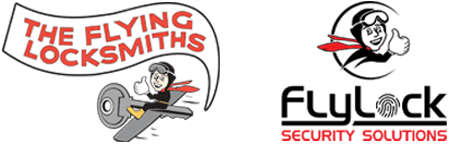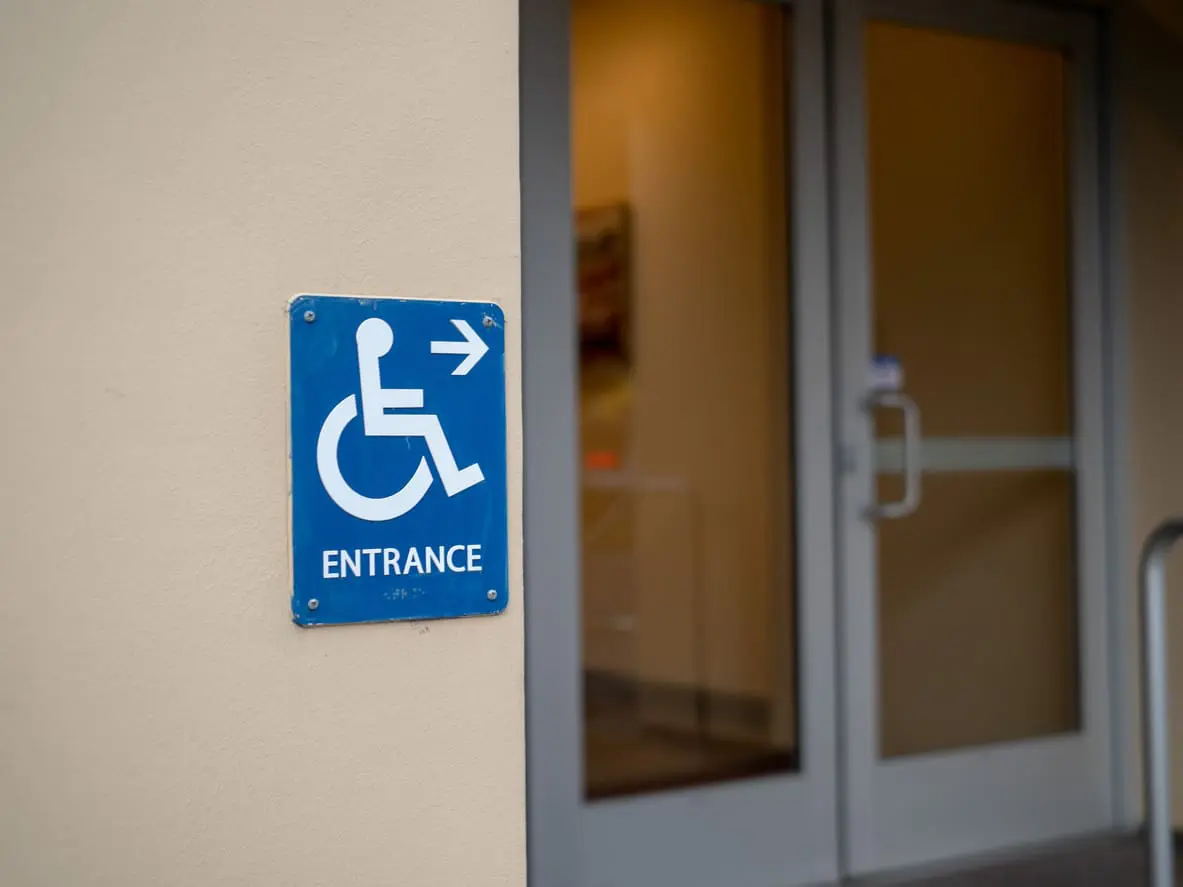A Comprehensive ADA Accessibility Audit Checklist for Commercial Doors and Facilities
Over 30 years ago, legislators enacted the Americans with Disabilities Act (ADA). This law ensures that people with disabilities feel equally included and have the same opportunities for accessing businesses that others do. Locksmith companies know all about ADA compliance and use ADA accessibility audits to ensure businesses meet these guidelines.
Making your facilities accessible to all should be a top priority of your business to give customers a welcoming ‘first-touch’ with your business and to avoid the legality that can come with improperly functioning doors.
TABLE OF CONTENTS
ADA Compliance Topics This Blog Includes:
- What is an ADA accessibility audit? Why does it matter?
- What are the ADA requirements for automatic doors?
- What are the ADA requirements for doors?
- What is the ADA requirement for door width?
- What is the ADA requirement on door closing speed?
- How much force should it require to open a door to your facility?
- What are the ADA standards for door hardware?
- How do I know if my thresholds are within ADA compliance?
- What about ADA compliance for the rest of my facility?
- FAQs
What is an ADA accessibility audit? Why does it matter?
An accessibility audit for a commercial building involves inspecting and assessing your facility’s doors, and its surrounding environment These reports evaluate your organization’s practices for meeting the needs of those who are disabled as well as the guidelines outlined in the ADA Standards.
The Flying Locksmiths is the nation’s largest commercial locksmith company—so suffice to say we do this stuff a lot. Let this checklist serve as not only a guiding line for determining if you need an accessibility audit, but also a single source of truth for analyzing the results.
What are the ADA requirements for automatic doors?
Automatic doors are predominately loved because they allow safe and convenient access to your facility. It’s a no-frills way of being compliant. Thus, most rules detailed below for manual doors likewise apply to automatic doors.
However, it’s important to note that only a licensed AAADM-certified security specialist should conduct an automatic door inspection. Every time an automatic door is touched by a certified locksmith, it must be fully inspected to ensure parts aren’t getting worn out, and it’s working as intended.
Without this AAADM inspection, you open your company up to liability from improperly functioning equipment.
What are the ADA requirements for doors?
As far as commercial doors are concerned, ADA requirements fall under different groups including width requirements, closing speed, opening force, door hardware, thresholds, spring hinges, maneuvering clearance, and signage.
If you intend on testing some of this yourself, get ready to bust out your measuring tape and door pressure gauge! Here are some short answers, read below for additional details on each group.
- Width Requirements - Minimum clear width of 32 inches
- Closing Speed - Must take at least 5 seconds to move from the full open position
- Opening Force - Must require 5 pounds or less of force to open without the need to tightly grasp
- Door Hardware - Must be operable with one hand, not require tight grasping, pinching, or twisting of the wrist, and door handles must be levers, not door knobs
- Thresholds - No more than 1/2 inch in height for new construction, maximum height is 3/4 inch but they must have a beveled edge
- Spring Hinges - Must go from 70 degrees to completely closed in no less than 1.5 seconds
- Maneuvering Clearance - Clear space of at least 30 inches by 48 inches in front of the door
- Signage - Openings with a low energy automatic door operator must clearly indicate the function of the door, typically with a sign, Automatic Caution Door, on a yellow background with black lettering
What is the ADA requirement for door width?
ADA Standards require a door to have a clear width of at least 32 inches and a maximum of 48 inches. Doorways should be clear from all debris. If you’re intending on measuring this yourself, then be sure to measure between the door face and the door stop while it’s open 90-degrees.
If you have a double door, only the active door leaf needs to comply with this requirement.
Also, a caveat, doors intended only for security personnel don’t need to comply with this rule.
What is the ADA requirement on door closing speed?
The general guideline for closing speed is that door closers take a minimum of five seconds to go from fully extended—90-degrees—to nearly closed—12-degrees. Essentially, this standard exists to ensure the door doesn’t close too fast and hit someone while in the pathway of the door.
How much force should it require to open a door to your facility?
This one is an easy one. If it takes more than 5-lbs of force to open your door, you’re not compliant with ADA Standards. Locksmiths use a compression tool or door pressure gauge to test opening force, so it’s unlikely you’ll be able to test this. General rule of thumb is: if the door feels too heavy and difficult to open, it’s probably not within the standard for door opening force.
What are the ADA standards for door hardware?
Standards can be a little spotty here depending on the application and use of the door. Essentially, all door hardware (exit devices, ADA compliant locks, handles, pulls etc.) must be between 34 inches and 48 inches above the finished floor.
Any hardware used on the door must be able to be operated with one hand, not require tight grasping, pinching, or twisting of the wrist. Push-type hardware is usually compliant with these rules.
Door handles must be a lever, locking hardware with a round door knob are not within ADA Compliance.
How do I know if my thresholds are within ADA compliance?
Thresholds are easy actually! Thresholds should be (at max) 1/2” high. If they are more than a 3/4” high, they must be beveled.
QUICK CHECKLIST FOR ADA COMPLIANT DOORS
What about ADA compliance for the rest of my facility?
Parking Lots and Garages
One of the most notable achievements of the Americans with Disabilities Act is the creation of designated accessible parking for individuals who are disabled and can’t cross long distances through garages and parking lots. Having enough designated parking spots with the international symbol of accessibility is essential. These slip-resistant parking spots should be closest to a wheelchair-accessible ramp or entrance.
Ramps and Cord Covers
Ramps play a major role in creating accessible entrances and exits while helping people with disabilities safely cross over cables, hoses, or wires. Providing heavy-duty, slip-proof extension cord covers and rail barriers is the best way to ensure no one trips or gets stuck in the wires.
Entrances and Exits
The essential element of ADA-compliant facilities is an accessible entrance and exit, allowing individuals with disabilities to enter and exit safely. Consider removing a set of stairs—even shallow steps—from the outside of your building and replacing it with a ramp or a lift.
Most facilities overlook their door’s hardware. Adding hands-free hardware or installing automatic door operators in multi-entrance facilities will help those with mobility issues or arthritis, while providing safe and convenient access for everyone accessing your facility.
For additional information on ADA Standards for entrances, doors and gates, you can refer to this excellent resource, U.S. Access Board Technical Guide.
Elevators
Your elevators must not only be ADA compliant but must also abide to all relevant state and national safety codes. Stanley Elevators, a leading provider in elevator installation, repair, and maintenance services throughout New England, brings decades of experience, adhering to the strictest safety and accessibility requirements.
Looking to find out if your elevators are within ADA Compliance? Look no further than Stanley Elevators, who have everything you need to know about compliance for elevators in their comprehensive guide, ADA Elevator Requirements: Your Complete Guide to ADA Dimensions & Compliant Elevators
Frequently Asked Questions
Do all doors need to be ADA compliant?
All customer doors do, yes! All doors not used solely by security personnel must adhere to these guidelines.
What are the ADA door width guidelines for wheelchairs?
The door width requirements for wheelchairs are the same as the normal commercial door requirements which must be between 32 inches and 48 inches. Doorways should be clear from all debris. If you’re intending on measuring this yourself, then be sure to measure between the door face and the door stop while it’s open 90-degrees.
What is the standard ADA door width requirement?
The ADA standards show doors must be between 32 and 48 inches wide. The best way to measure them is from stop to edge while the door is extended 90-degrees.
How do I know the locksmith company performing an accessibility audit and installing auto door operators is qualified?
The American Association of Automatic Door Manufacturers (AAADM) administers a certification program for door industry professionals. AAADM provides certified training programs for automatic door installers and service technicians. The Flying Locksmiths are a reputable and trustworthy locksmith and access control company that ensures these certification requirements are met and can show documentation if requested.
Our technicians are registered in the AAADM database and are given a certificate upon successful completion of the training program. AAADM inspectors are required to renew their certification each year.
Why are accessibility audits essential for your building?
If you don’t want to face thousands of dollars in lawsuits, your business should regularly perform accessibility audits for your workplace. Every year, thousands of companies face lawsuits from individuals with disabilities for not accommodating ADA regulations and guidelines. Failing to bring your building up to code can impact many people’s lives daily. Non-ADA-compliant facilities often have barriers that make mobility and safe access difficult for these individuals.
How can we help ensure your facility is ADA compliant?
The Flying Locksmiths perform security risk assessments and ADA Accessibility Audits nationwide. We’re a trustworthy locksmith and access control company dedicated to providing the very best commercial security solutions. Contact us today to speak with one of our experienced team members about how we can assist you with any questions related to your commercial doors and ADA Compliance.



